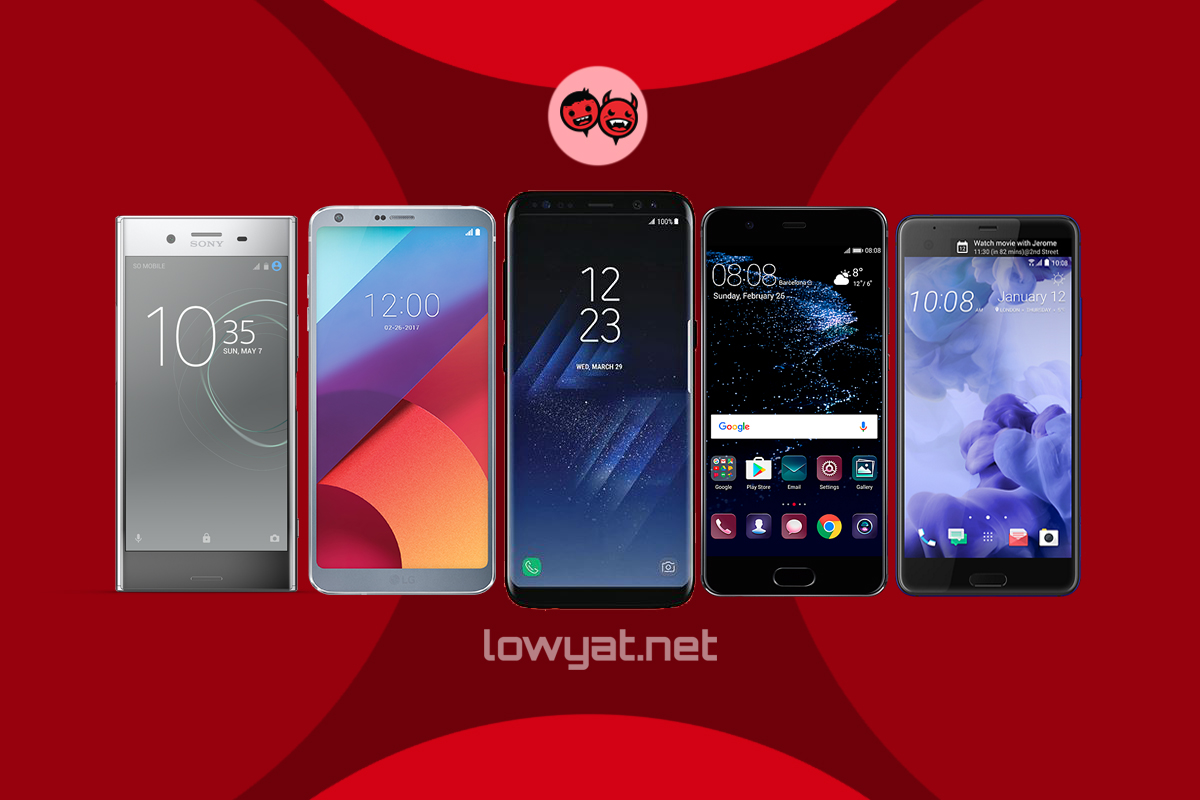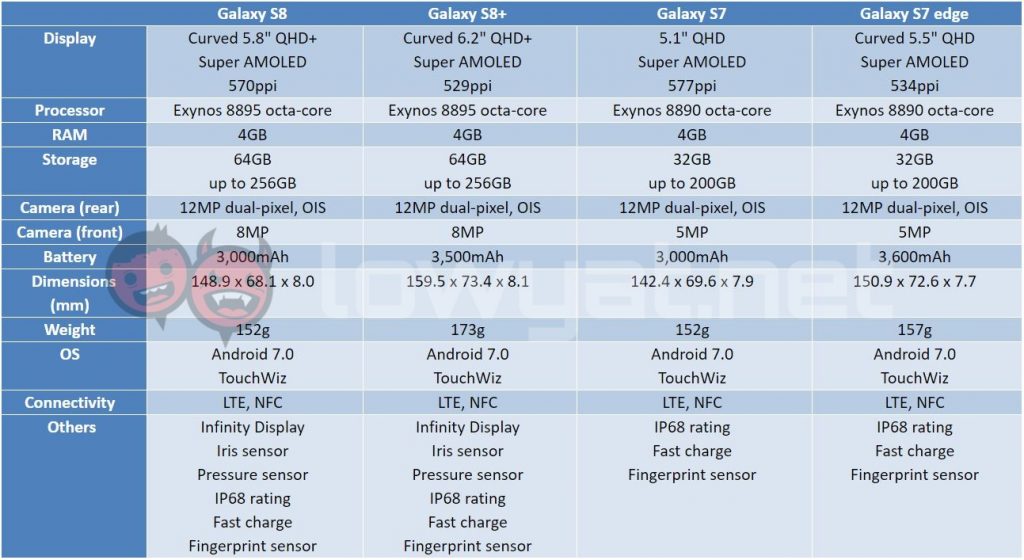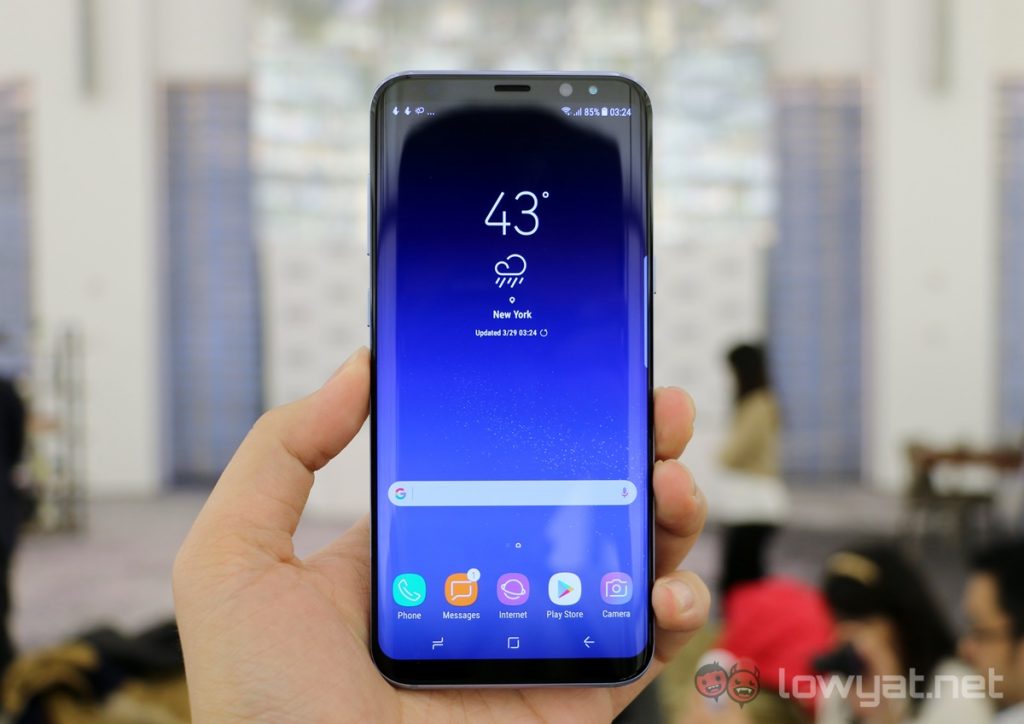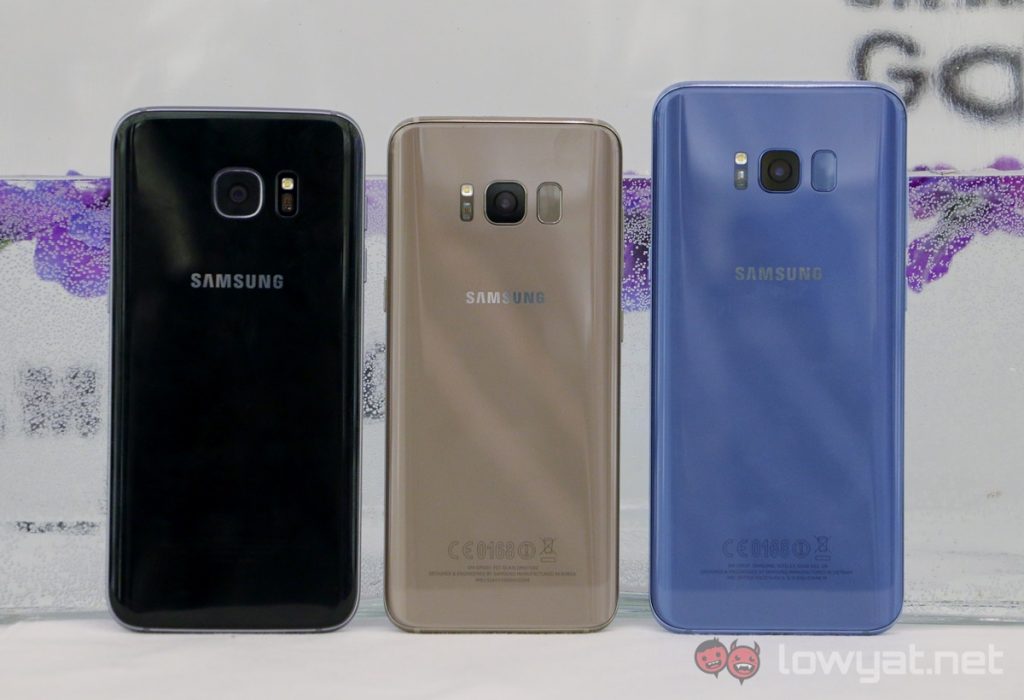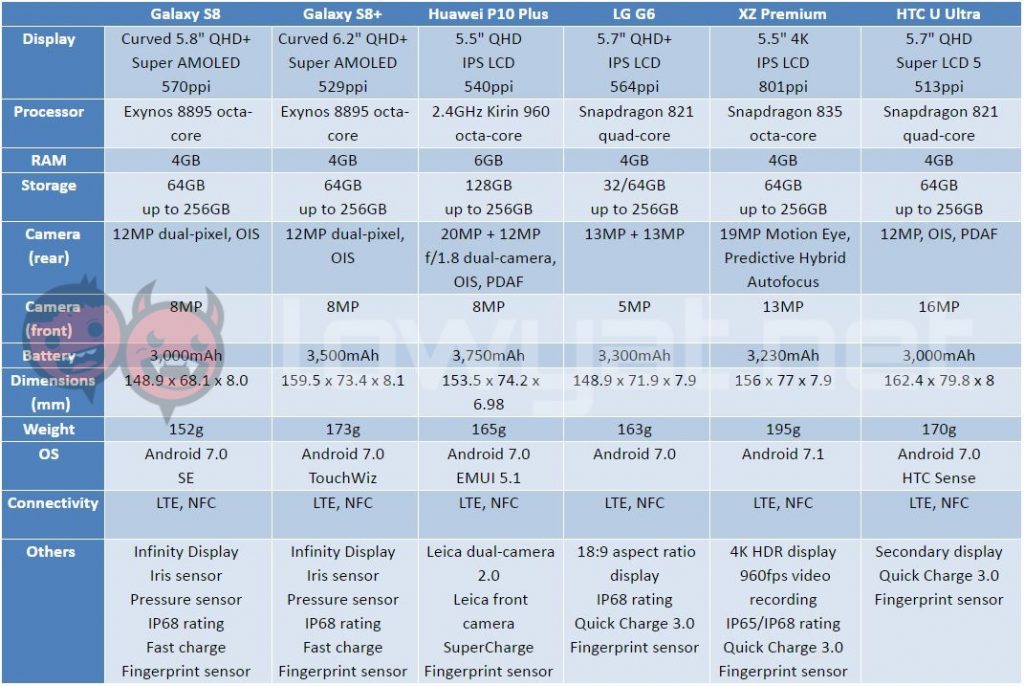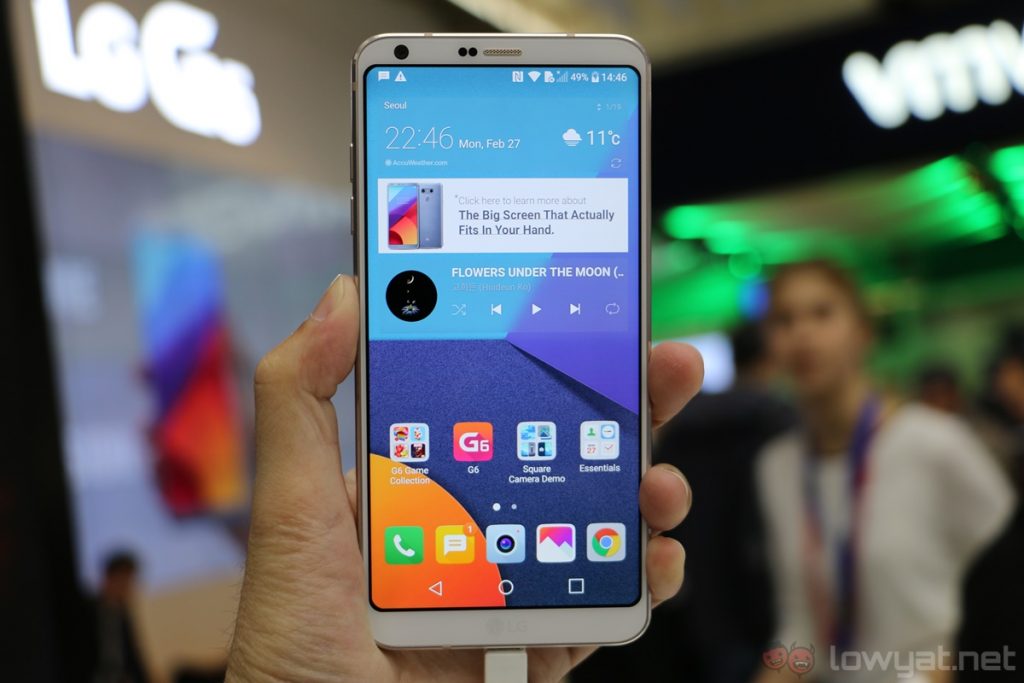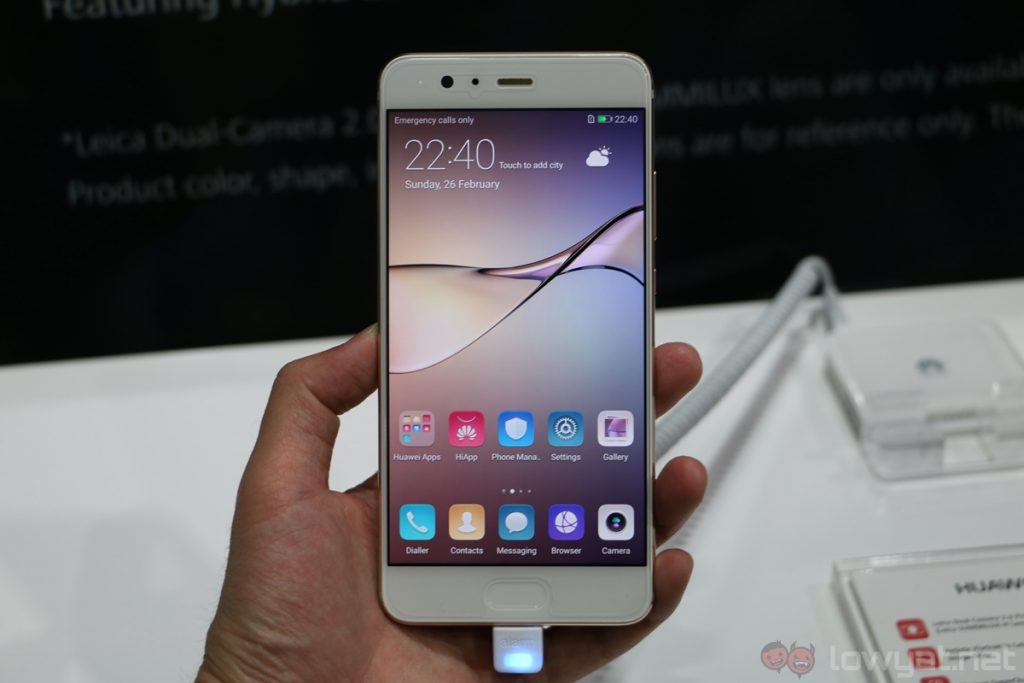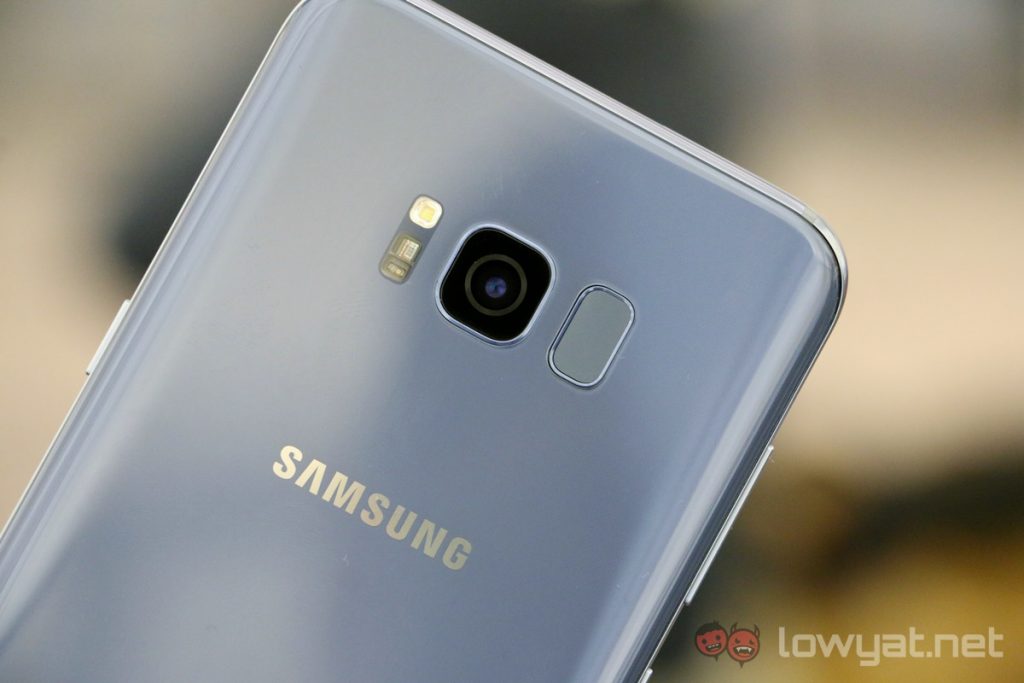After months of anticipation, the Samsung Galaxy S8 and S8+ are finally official, and they have all the makings to be the Korean company’s best flagship smartphones yet. As is always the case when new devices are announced, an updated spec sheet is in order, so let’s see how the S8 and S8+ stack up to their competition – and predecessors.
In comparison to the Samsung Galaxy S7 and S7 edge, the Galaxy S8 and S8+ share some hardware with their predecessors. These include the same excellent 12MP dual-pixel rear camera with f/1.7 aperture, IP68 rating, and of course, similar glass and metal design language.
That being said, the Galaxy S8 and S8+ are packed with a slew of more impressive hardware, and none is more eye-catching than the new Infinity Display. Not only does the new display has a taller and more narrow aspect ratio, it also comes with very, very minimal bezels, which give the S8 and S8+ a very sleek-looking design.
Another interesting hardware upgrade lies in the processors of the Galaxy S8 and S8+. Built on the 10nm process, the Exynos 8895 promises greater performance and improved power efficiency; the latter is especially important considering the rather modest battery capacities of the S8 and S8+.
See, despite having larger displays than their predecessors, the Galaxy S8 and S8+ are packed with 3,000mAh and 3,500mAh batteries respectively. Of course, the 10nm Exynos 8895 processor may provide better power efficiency than the 14nm Exynos 8890 chipset found in the S7 and S7 edge, but it still remains to be seen if the S8 and S8+ will have good battery life.
Things get a lot more interesting once we compare the Galaxy S8 and S8+ to their competition. The first device we’re most eager to compare them to is definitely LG’s G6, which has an almost similar display to the S8 and S8+.
Much like the Galaxy S8 and S8+, the LG G6 display has very minimal bezels, though the latter’s design isn’t quite as sleek-looking as Samsung’s offering. Aside from that, the G6 has a taller than usual 18:9 display too, which is akin to the S8 and S8+’s 18.5:9 displays. In terms of size, the G6 also has similar dimensions to the Galaxy S8, though the former does have a slightly bigger 3,300mAh battery over the S8’s 3,000mAh cell.
That being said, the Galaxy S8 and S8+’s Exynos 8895 processors are by far the best of the lot – bar the Sony Xperia XZ Premium, which is powered by Qualcomm’s Snapdragon 835 (also built on the 10nm platform) chipset. This aspect alone give the S8 and S8+ an edge in the performance and power efficiency department, though it still remains to be seen just how the Exynos 8895 will perform in real life usage.
If we were to choose which of the flagship devices listed above would offer the best battery life, we can’t help but to imagine the Huawei P10 Plus would excel the most. After all, it has the biggest battery capacity here, not to mention the smallest display (although a 5.5-inch device is hardly small). Then again, the 10nm Exynos 8895 processors and Super AMOLED displays of the S8 and S8+ may give them better battery life at the end of the day – we’ll definitely find out in our full review of these devices.
Samsung definitely delivered two high-end, premium flagship smartphones in the Galaxy S8 and S8+, but this is only the beginning of Samsung’s biggest challenge yet. After the Galaxy Note 7 debacle, high expectations are placed on the S8 and S8+, and only time will tell if these two smartphones can win back consumers’ trust in Samsung.
Follow us on Instagram, Facebook, Twitter or Telegram for more updates and breaking news.


